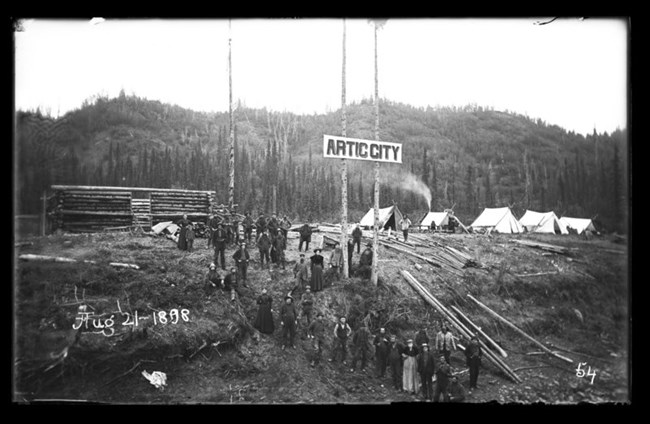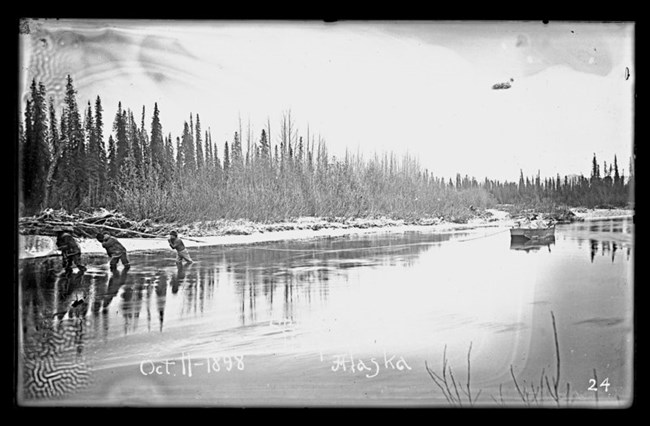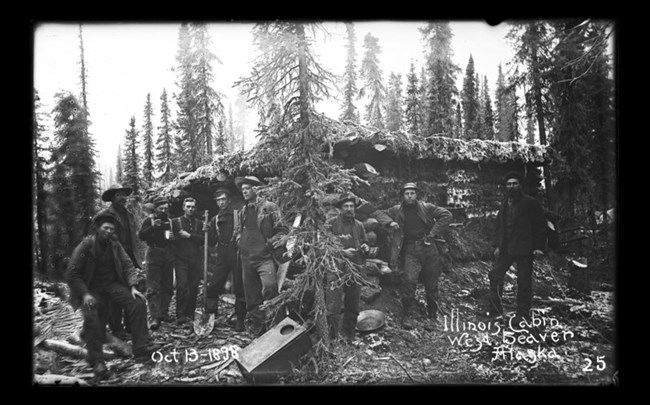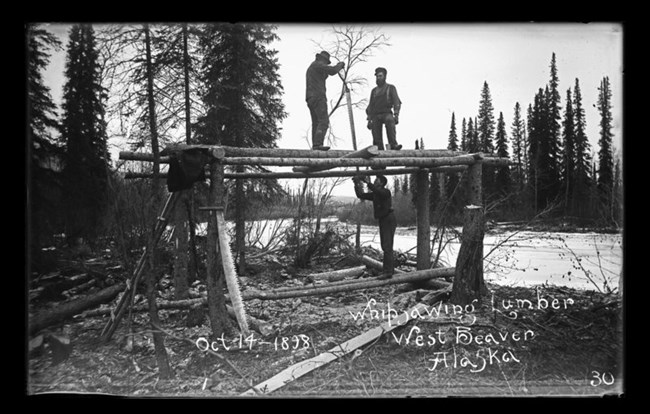|
Upriver to the Koyukuk and Alatna Once the Illinois was complete, the Galesburg men created a kind of flotilla for the journey up the Yukon River, with a flat-bottomed barge tied to the front of the Illinois and the Silver Wave following behind. Before attempting the 80-mile ocean crossing between St. Michael and the mouth of the Yukon, they also joined forces with a group of prospectors from Pennsylvania known as the Beaver party. Instead of heading for the Klondike, they all decided to try their luck on the Koyukuk River that feeds into the Yukon roughly 450 miles from the Bering Sea. "Splendid reports come from there," Wyman wrote in another letter, "but it has never been much prospected as it has been very difficult to get in there with grub enough to stay any length of time." 
Jasper N. Wyman Collection After a difficult crossing to the Yukon River delta, both the Silver Wave and the Illinois experienced frequent mechanical problems, but after a week of work they managed to reach the trading post of Andreanofsky and then the mission town of Holy Cross, where the group decided to lighten their load by leaving half of their provisions and the disabled Silver Wave. The boilers of the Illinois consumed between four and five cords of wood a day, and mosquitoes and gnats made the daily chore of chopping wood a misery. After stopping at the town of Nulato, the prospectors reached the mouth of the Koyukuk River on August 8 where a small store and post office served stampeders heading north. Eventually the men from Illinois reached a tiny boomtown on the banks of the Koyukuk called Arctic City, located strategically at the northernmost navigable point on the river. 
Jasper N. Wyman Collection Instead of leaving their steamboat and proceeding up one of the main branches of the Koyukuk, the Galesburg company decided to try the nearby Alatna River, which in those days was known as the Allenkaket. This stream was even more narrow and crooked than the Koyukuk, and the Illinois traveled five days to cover only forty miles up the river. At times narrow channels and rapids forced them to unload all of their supplies on sandbars and to use ropes to pull the steamboat upstream. By ferrying their supplies in smaller loads, the prospectors were able to, after four months of arduous travel, establish a mining camp and to begin sending groups of five or six men out on prospecting missions. Meanwhile various groups of prospectors arrived aboard their own steamboats-the Argo, Beaver, Sunflower, and others-until six steamer parties were on the Alatna River. Eventually the groups coalesced into two mining camps called Beaver City and Rapid City. Both camps were located just a few miles south of the boundary of what is today Gates of the Arctic National Park and Preserve. 
Jasper N. Wyman Collection Surviving Winter During the month of September daily temperatures dropped as Wyman and his fellow prospectors staked placer gold claims along the Alatna tributaries they called Help-Me-Jack Creek and nearby Rock Bottom Creek. They also built small, rustic log cabins to help them survive the approaching winter. Construction of the cabins was simple, though it required plenty of hard work. After cutting spruce logs, the men would notch and assemble the logs into a cramped 16-by-16-foot box with a wood stove that could keep four or five men warm (or at least alive) through the coldest nights. The walls were chinked with moss, and the flat roofs were covered with layers of moss and dirt. The floors were made of logs with the tops hewn off, and the windows were covered in paper or cloth because no glass was available. 
Jasper N. Wyman Collection With some men living aboard steamboats and some living in log cabins, a community atmosphere began to develop even though they were all competing to find the best gold prospects. As the days grew shorter and colder, the men played poker-calling it "bean poker" because they used beans instead of cash-and did chores like chopping firewood, doing laundry or whipsawing logs into lumber for tables and shelves. One evening, Wyman traveled from his cabin in Rapid City to visit Beaver City residents, and the men got together for an old-fashioned musical revival with costumes and whatever musical instruments they had brought along.
|
Last updated: April 14, 2015
